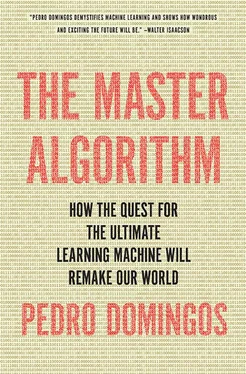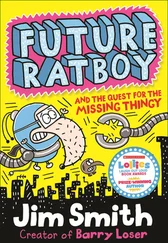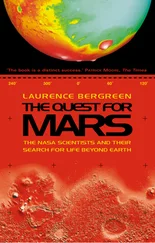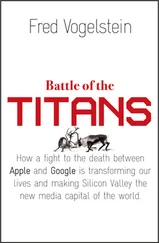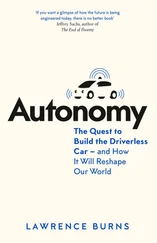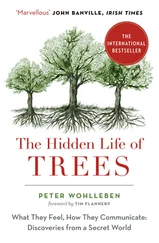
Pedro Domingos
The Master Algorithm: How the Quest for the Ultimate Learning Machine Will Remake Our World
Copyright © 2015 by Pedro Domingos
TO THE MEMORY OF MY SISTER RITA, WHO LOST HER BATTLE WITH CANCER WHILE I WAS WRITING THIS BOOK
The grand aim of science is to cover the greatest number of experimental facts by logical deduction from the smallest number of hypotheses or axioms.
– Albert Einstein
Civilization advances by extending the number of important operations we can perform without thinking about them.
– Alfred North Whitehead
You may not know it, but machine learning is all around you. When you type a query into a search engine, it’s how the engine figures out which results to show you (and which ads, as well). When you read your e-mail, you don’t see most of the spam, because machine learning filtered it out. Go to Amazon.com to buy a book or Netflix to watch a video, and a machine-learning system helpfully recommends some you might like. Facebook uses machine learning to decide which updates to show you, and Twitter does the same for tweets. Whenever you use a computer, chances are machine learning is involved somewhere.
Traditionally, the only way to get a computer to do something-from adding two numbers to flying an airplane-was to write down an algorithm explaining how, in painstaking detail. But machine-learning algorithms, also known as learners, are different: they figure it out on their own, by making inferences from data. And the more data they have, the better they get. Now we don’t have to program computers; they program themselves.
It’s not just in cyberspace, either: your whole day, from the moment you wake up to the moment you fall asleep, is suffused with machine learning.
Your clock radio goes off at 7:00 a.m. It’s playing a song you haven’t heard before, but you really like it. Courtesy of Pandora, it’s been learning your tastes in music, like your own personal radio jock. Perhaps the song itself was produced with the help of machine learning. You eat breakfast and read the morning paper. It came off the printing press a few hours earlier, the printing process carefully adjusted to avoid streaking using a learning algorithm. The temperature in your house is just right, and your electricity bill noticeably down, since you installed a Nest learning thermostat.
As you drive to work, your car continually adjusts fuel injection and exhaust recirculation to get the best gas mileage. You use Inrix, a traffic prediction system, to shorten your rush-hour commute, not to mention lowering your stress level. At work, machine learning helps you combat information overload. You use a data cube to summarize masses of data, look at it from every angle, and drill down on the most important bits. You have a decision to make: Will layout A or B bring more business to your website? A web-learning system tries both out and reports back. You need to check out a potential supplier’s website, but it’s in a foreign language. No problem: Google automatically translates it for you. Your e-mail conveniently sorts itself into folders, leaving only the most important messages in the inbox. Your word processor checks your grammar and spelling. You find a flight for an upcoming trip, but hold off on buying the ticket because Bing Travel predicts its price will go down soon. Without realizing it, you accomplish a lot more, hour by hour, than you would without the help of machine learning.
During a break you check on your mutual funds. Most of them use learning algorithms to help pick stocks, and one of them is completely run by a learning system. At lunchtime you walk down the street, smart phone in hand, looking for a place to eat. Yelp’s learning system helps you find it. Your cell phone is chock-full of learning algorithms. They’re hard at work correcting your typos, understanding your spoken commands, reducing transmission errors, recognizing bar codes, and much else. Your phone can even anticipate what you’re going to do next and advise you accordingly. For example, as you’re finishing lunch, it discreetly alerts you that your afternoon meeting with an out-of-town visitor will have to start late because her flight has been delayed.
Night has fallen by the time you get off work. Machine learning helps keep you safe as you walk to your car, monitoring the video feed from the surveillance camera in the parking lot and alerting off-site security staff if it detects suspicious activity. On your way home, you stop at the supermarket, where you walk down aisles that were laid out with the help of learning algorithms: which goods to stock, which end-of-aisle displays to set up, whether to put the salsa in the sauce section or next to the tortilla chips. You pay with a credit card. A learning algorithm decided to send you the offer for that card and approved your application. Another one continually looks for suspicious transactions and alerts you if it thinks your card number was stolen. A third one tries to estimate how happy you are with this card. If you’re a good customer but seem dissatisfied, you get a sweetened offer before you switch to another one.
You get home and walk to the mailbox. You have a letter from a friend, routed to you by a learning algorithm that can read handwritten addresses. There’s also the usual junk, selected for you by other learning algorithms (oh, well). You stop for a moment to take in the cool night air. Crime in your city is noticeably down since the police started using statistical learning to predict where crimes are most likely to occur and concentrating beat officers there. You eat dinner with your family. The mayor is in the news. You voted for him because he personally called you on election day, after a learning algorithm pinpointed you as a key undecided voter. After dinner, you watch the ball game. Both teams selected their players with the help of statistical learning. Or perhaps you play games on your Xbox with your kids, and Kinect’s learning algorithm figures out where you are and what you’re doing. Before going to sleep, you take your medicine, which was designed and tested with the help of yet more learning algorithms. Your doctor, too, may have used machine learning to help diagnose you, from interpreting X-rays to figuring out an unusual set of symptoms.
Machine learning plays a part in every stage of your life. If you studied online for the SAT college admission exam, a learning algorithm graded your practice essays. And if you applied to business school and took the GMAT exam recently, one of your essay graders was a learning system. Perhaps when you applied for your job, a learning algorithm picked your résumé from the virtual pile and told your prospective employer: here’s a strong candidate; take a look. Your latest raise may have come courtesy of another learning algorithm. If you’re looking to buy a house, Zillow.com will estimate what each one you’re considering is worth. When you’ve settled on one, you apply for a home loan, and a learning algorithm studies your application and recommends accepting it (or not). Perhaps most important, if you’ve used an online dating service, machine learning may even have helped you find the love of your life.
Society is changing, one learning algorithm at a time. Machine learning is remaking science, technology, business, politics, and war. Satellites, DNA sequencers, and particle accelerators probe nature in ever-finer detail, and learning algorithms turn the torrents of data into new scientific knowledge. Companies know their customers like never before. The candidate with the best voter models wins, like Obama against Romney. Unmanned vehicles pilot themselves across land, sea, and air. No one programmed your tastes into the Amazon recommendation system; a learning algorithm figured them out on its own, by generalizing from your past purchases. Google’s self-driving car taught itself how to stay on the road; no engineer wrote an algorithm instructing it, step-by-step, how to get from A to B. No one knows how to program a car to drive, and no one needs to, because a car equipped with a learning algorithm picks it up by observing what the driver does.
Читать дальше
